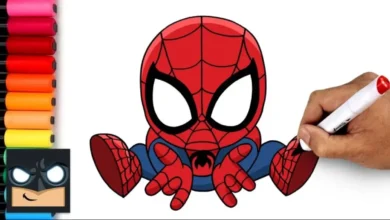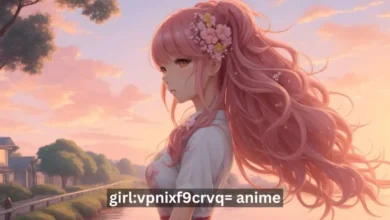Flower Drawing Easy and Beautiful: A Complete Guide for Beginners

Introduction
flower drawing easy and beautiful Flower drawing is a timeless art form that has captivated beginners and experienced artists alike. Its simplicity and beauty make it an ideal starting point for those looking to explore their creative potential. Drawing flowers is not only a relaxing activity but also a wonderful way to hone your artistic skills. Whether you’re a student looking for a creative outlet, a hobbyist searching for new projects, or someone new to art, this guide is designed to help you create easy and beautiful flower drawings effortlessly.
In this article, we’ll explore the tools you need, step-by-step instructions for drawing different types of flowers, creative ideas to elevate your artwork, and tips to avoid common mistakes. By the end, you’ll feel confident in your ability to create stunning flower drawings flower drawing easy and beautiful.
Tools and Materials for Easy Flower Drawing
Before you start drawing, it’s essential to have the right tools. Here are some must-haves for a successful flower drawing experience flower drawing easy and beautiful:
Essential Tools
- Pencils: Start with a basic set of pencils ranging from HB for light lines to 4B or 6B for darker shading. These allow for versatility in your sketches.
- Erasers: A regular rubber eraser is useful for removing larger areas, while a kneaded eraser helps refine smaller details.
- Sketch Pads: Opt for good-quality drawing paper or sketch pads. A smooth surface is ideal for detailed work.
Optional Materials
- Colored Pencils and Markers: Perfect for adding vibrancy to your flowers.
- Blending Tools: Items like blending stumps, tissue paper, or cotton swabs can help achieve smooth shading and gradients.
Tips for Beginners
- Stick to basic tools if you’re just starting.
- Invest in materials that fit your budget and gradually upgrade as you improve.
- Organize your workspace to keep your tools easily accessible.
Step-by-Step Guide to Drawing Easy and Beautiful Flowers
Basic Shapes and Foundations
Every great flower drawing begins with understanding basic shapes. Most flowers can be simplified into circles, ovals, and lines. For example:
- Petals: Start with an oval or teardrop shape for each petal.
- Stems and Leaves: Use straight or slightly curved lines.
- Flower Center: A small circle often forms the focal point.
Practicing these foundational shapes helps you build a strong base for your drawings.
Simple Flower Designs for Beginners
Daisy
Begin by drawing a small circle for the flower’s center. Surround it with evenly spaced oval petals. Add a thin stem and a pair of simple leaves. Finish by shading the petals lightly and adding texture to the center.
Tulip
Draw a U-shaped outline for the main body of the tulip. Add pointed petal tips at the top. Sketch a straight stem and long, narrow leaves curving gracefully on either side. Add shading to highlight the natural curves.
Rose
Start with a small spiral for the rose’s center. Add layers of petals by drawing curved lines around the spiral. As you move outward, make the petals larger and slightly wavy. Add a stem and leaves for a complete look.
Adding Details to Make Drawings Beautiful
- Shading Techniques: Use light and dark pencil strokes to create depth.
- Texture: Add small lines and veins to petals and leaves.
- Highlights and Shadows: Identify light sources to create a more realistic effect.
Creative Ideas for Flower Drawing
Combining Flowers in Bouquets and Patterns
Creating bouquets allows you to practice composition. Start with a central flower and build outward, mixing various flower types and sizes. Floral patterns are also fun; you can repeat flowers to design borders, greeting cards, or mandalas flower drawing easy and beautiful.
Experimenting with Colors
Adding colors brings your drawings to life. Use:
- Colored Pencils: Layer colors for a soft, blended effect.
- Watercolors: Add a delicate, dreamy quality.
- Markers: For bold and vibrant hues.
Experiment with combinations and observe how colors interact to create dynamic effects.
Inspiration from Nature
Take a nature walk and observe real flowers. Pay attention to shapes, colors, and patterns. Bring a sketchbook to capture what inspires you or snap photos to reference later flower drawing easy and beautiful.
Common Mistakes and How to Avoid Them
Overcomplicating Designs
Stick to simple structures, especially as a beginner. Avoid adding unnecessary details that overwhelm the drawing.
Misusing Shading Techniques
Practice consistent shading techniques. Avoid heavy-handed strokes that make the drawing look unnatural.
Choosing Inappropriate Tools
Low-quality tools can hinder progress. Invest in reliable materials suited for beginners flower drawing easy and beautiful.
Rushing the Process
Art requires patience. Take your time to refine each step, and don’t be afraid to make corrections flower drawing easy and beautiful.
Conclusion
Drawing flowers is an enjoyable way to express creativity while developing artistic skills. With the right tools, simple techniques, and consistent practice, anyone can create beautiful flower drawings. Remember, the key is to start small, embrace your mistakes, and let your imagination flourish flower drawing easy and beautiful.
Take this guide as a starting point and let your creativity lead you. The beauty of art lies in its endless possibilities—your next masterpiece awaits flower drawing easy and beautiful!
Also Read: cecily tynan salary




